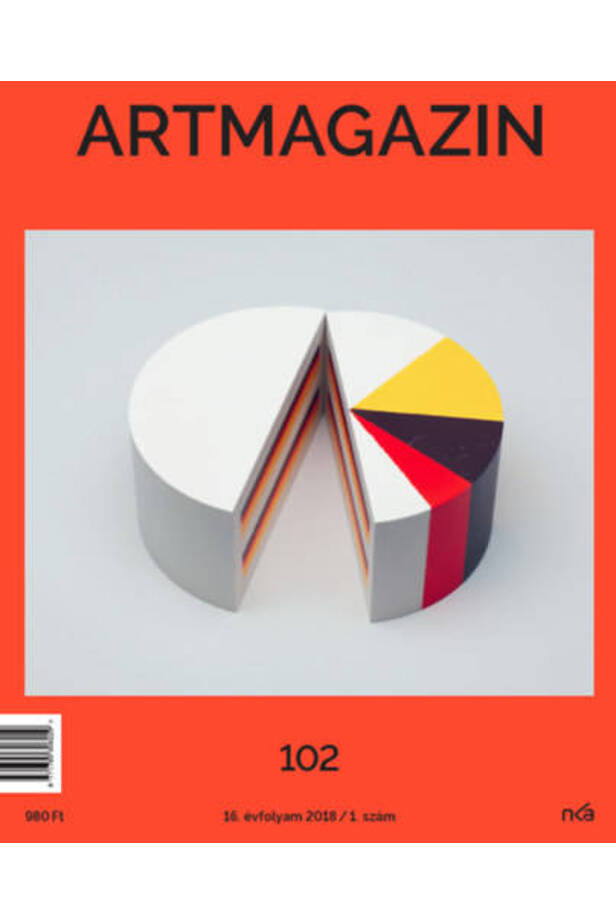Artmagazin 102 - 2018/1.
Delivery time: 2 - 3 business days
Quantity:
HUF 890
Description
Artmagazin's articles are published in the field of contemporary and classical art, focusing on Hungarian and international events, research, trends and trends. Our interest extends to border areas: fashion and design are as much a topic here as the connection points between theater, architecture and music. On our front page is the work of an exquisite cake designer, Martí Guixé, which is hard to decide if it is a kitchen ornament or a real dish. We would call it a design product that balances genre boundaries if we didn’t have to face the fact that there are no boundaries for a long time. Our current situation can be described as the state of total design. In the age of man, that is, in the anthropocene, there is no area that is free from the effects of human activity, in a word, there is no non-design existence. And all we can do is browse through the subject that encompasses the whole of the man-made environment. In our first issue of this year, we’ll cover the upscale but little-outlined concept of food design, its subspecies, illustrated with appetizing and seemingly inedible compositions. But we’re talking about design classics and contemporaries: we can compare the modernist, functionalist, yet body-shaped, comfortable clamshell of American designer couple Charles and Ray Eames to the furniture designed by young Hungarian architects with an unexpected pairing of materials at hand. The concrete seated PVC pipe furniture of the au workshop, which also takes on behalf of uncomfortable architecture, does not seem comfortable at first glance, but comfort is not the primary or only goal an architect or designer can set for himself, as the creative team put it. Attitudes are changing, but so are materials and technology. The jolly joker of the sixties and seventies was plastic with modern properties, and the fashionable products were all made of this, from nylon stockings to pillows. Today, the all-encompassing plastic is more of a swear word; archaeologists of the future will probably not be able to dig deep enough not to rummage through the plastic debris that is incapable of decomposing. It is possible that the almost fetishized 3D printing these days, in addition to the wonderful possibilities, will also pound us with a flood of object clones, and we will soon be longing for the age in which there was only clay at our fingertips. What hasn’t gone out of fashion for millennia anyway, let’s just take the flourishing of ceramic circles or the renaissance of unique tableware and funny porcelain nips. Our interviewees share with us the mystery and pragmatic side of object creation, we can learn from them that the new trend will be the unique beauty of craftsmanship, contingency and imperfection. Our authors and interlocutors show the memories, stories and destinies enclosed in the objects, and they can even talk about the bicycle part, the checkerboard, the winter ice cream or the hidden glass window of an apartment building in Budapest. (Sz. R.) Artmagazin No. 102 CONTENTS ARTANZIX Art trade Gábor Martos: SUCCESSORS OF THE ART TRADE 2017 international and domestic art market exhibition Exhibition Zsanett Lépold: TECHNICAL PERFECTION AND TIMELESS AESTHETICS workshop with Dénes Emil Ghyczy and Lukác Szederkényi Study Ákos Schneider: DESIGN IN THE AGE OF ANTHROPOCENE Food design Bianka Geiger: FOOD Interview Renáta Szikra - Zsanett Lépold Design! Time travel from the five-year plan to the PVC armchair In the studio Miklós Fáy: THIS IS BECAUSE A PIECE OF WOOD AND THE LEKVÁR THAT IS IT Studio interview with Gábor Roskó Architectural history Géza Boros: DESIGNED : András Bernát - The configuration of the landscape
| publisher | Artmagazin Kft. |
|---|---|
| scope | 64 |
| volume unit | oldal |
| ISBN | 9771785306229 |
| year of publication | 2018 |
| binding | carton |

Sign up for our newsletter and be the first to know!
A Zamnia hírlevélre való feliratkozással megerősítem, hogy betöltöttem a 16. életévemet.


